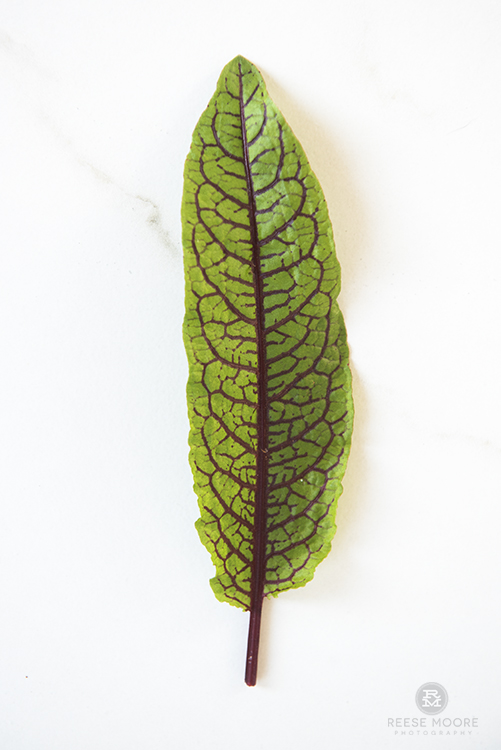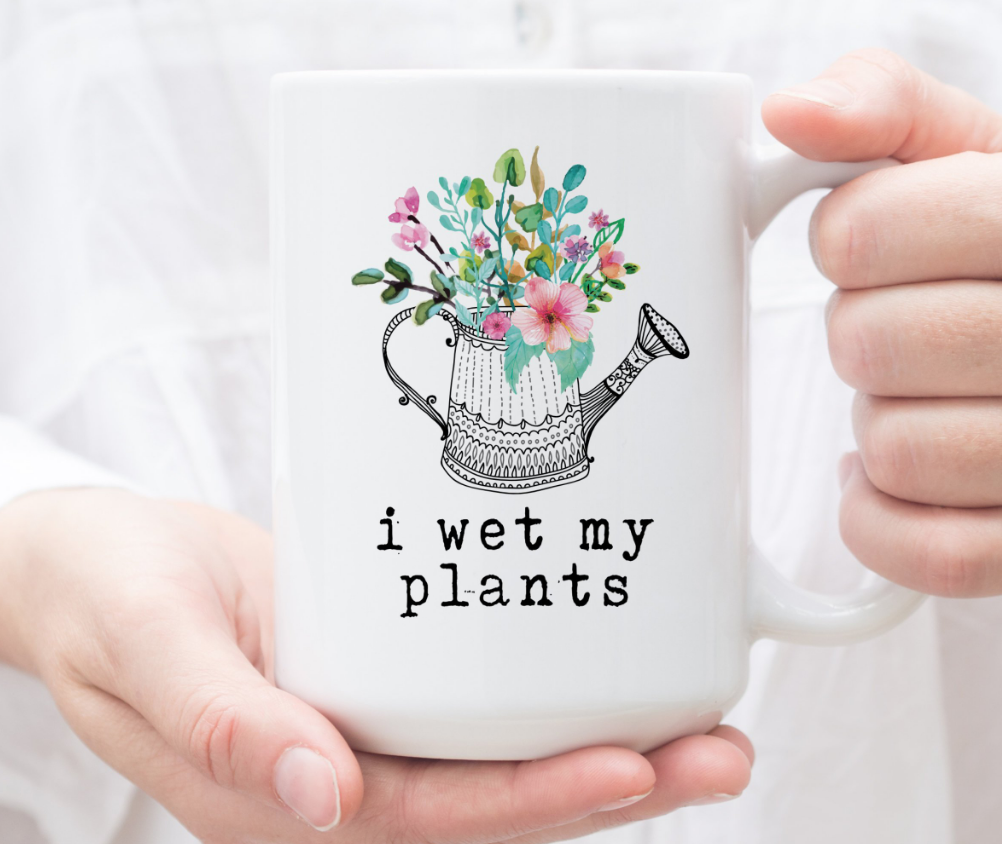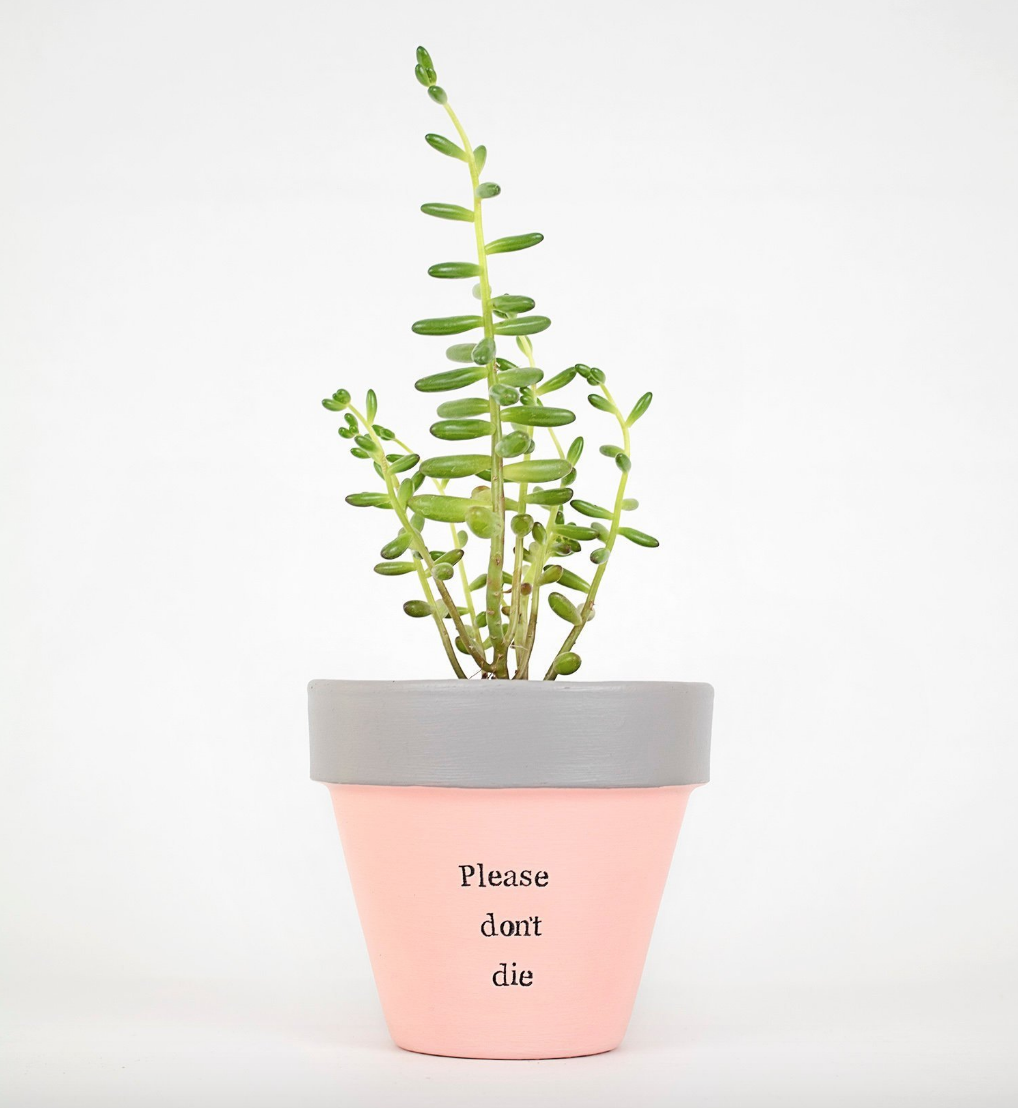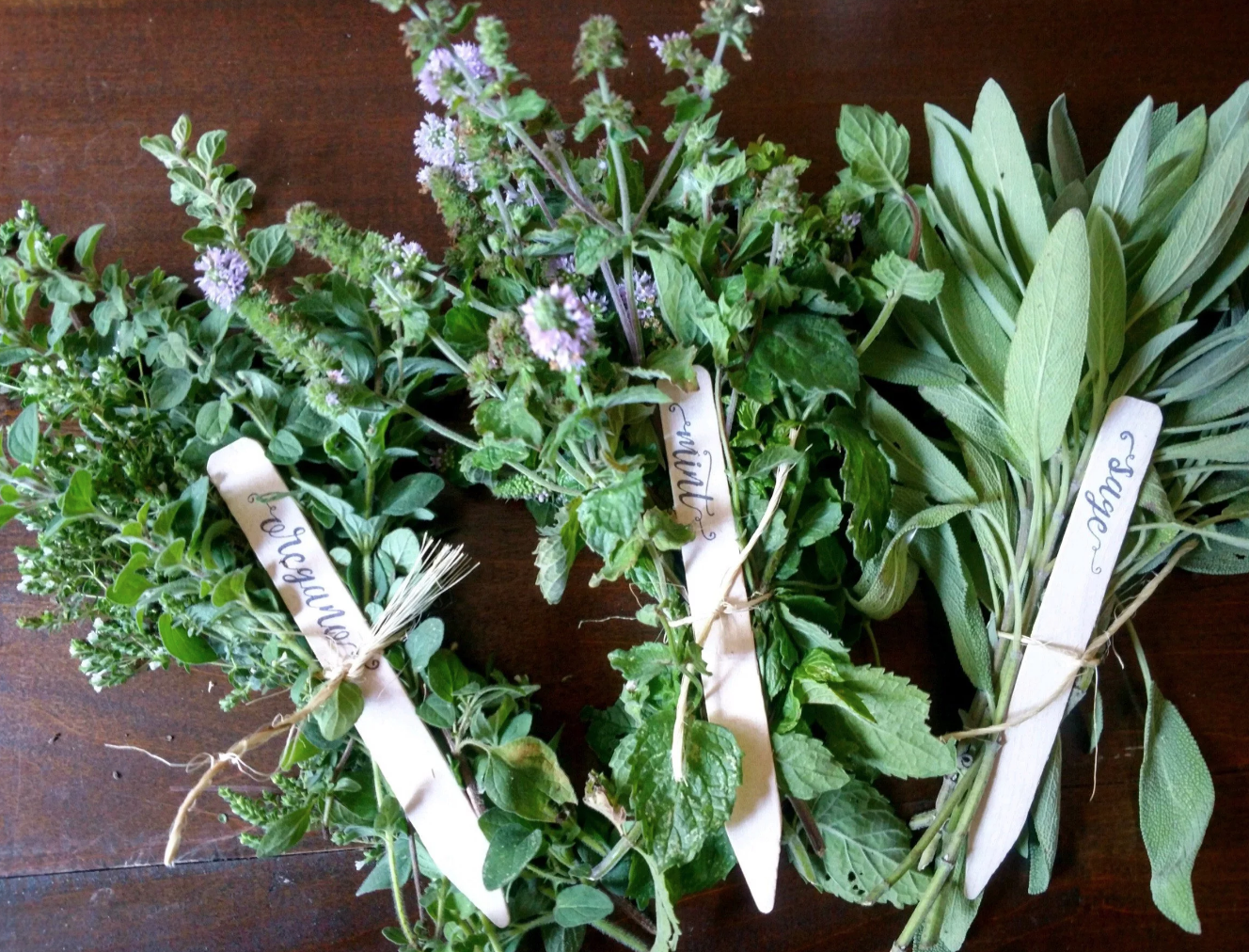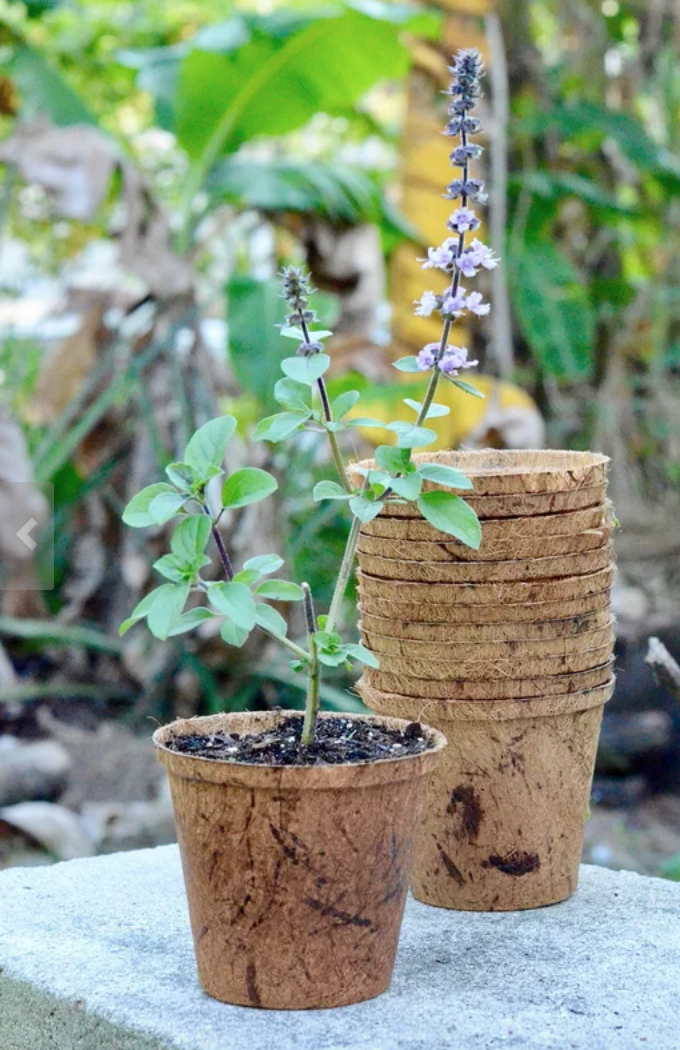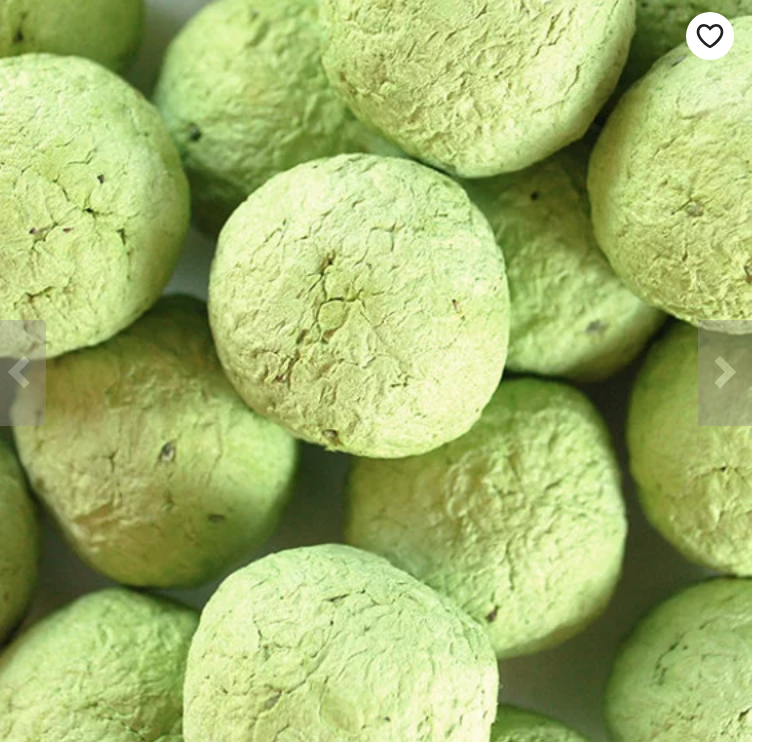Southern Gardeners: 15 Edible Plants You Basically Cannot Kill
/I have a confession to make: I am a garbage plant mom.
I have everyone fooled with beautiful Instagram photos of bountiful harvests of food I’ve grown in my garden, and everyone attributes it to me having a green thumb. It’s not true. I’ve committed absolute atrocities in the garden, some of which you’re about to read about below in all their shameful, gritty glory. If it’s possible to do? I’ve done it.
Here’s my secret to deceiving people: I ONLY PLANT WINNERS.
Two year old tabasco plant thriving during period of SHAMEFUL period of neglect. Dog shown for scale.
Every once in a while I get fancy with new things or high maintenance plants, but basically, I am the mom from I, Tonya when it comes to my garden. (If you missed that reference, click here. Please and thanks.) My love is both fickle and fully dependent on how well my plant babies perform, and frankly, even then I’m usually very busy and easily distracted - a very dangerous combination if you are a non-verbal life form depending on me to sustain you. (My exception is my bee gardens. Those get lots of lovin' because they are filled with cute little buzzy creatures.)
If you want to know how to start growing your own food, go over and read Elana’s post on Salvage and Stitch.
If you want to know what to plant that you basically cannot kill? Read on, you savage gardener, you. I bet you don’t wear gloves. I bet you don’t stake your plants. Shoot-dang, I bet you’ve never Googled compost-soil ratio even once, you heathen. Welcome. You’ve found the right post.
I will issue a few qualifiers on this: Do not plant something and then TRY to kill it.
Great. Now that that’s out of the way, remember that your climate factors heavily into this. What’s indestructible in the Southeast may not be your jam in Rhode Island (…duh). And just because these plant babies are hard to kill doesn’t mean they’re going to flourish unless you dump water on them and at least make a half-hearted gesture at taking care of them from time to time; they’re just probably going to pathetically cling to life. If you DO take care of them, you'll reap Instagram-worth results.
*This post contains affiliate links. This means that if you click through and give the product a whirl, I get a tiny fee for spreading the news at no extra cost to you. This helps me offset the enormous amount of time that goes into Compost & Cava.
It's not that I've set out to take terrible care of my plants, I just have a rather ambitious garden and incredibly busy workload. Life happens. I do mix compost in before putting in annuals, but I go through serious phases of neglect. I've recommitted myself to my garden as part of my 100 Greener Choices, but I wanted to pass along this info for the newbies and those who claim they "always kill everything."
Also, this post is NOT for you lunatics trying to plant vegetables from seed. Ain’t nobody got time for that at Moore Manor. I’ll grow flowers from seed, no problem. But when it comes to my edibles, I am in it to win it. (But if you are looking for a post on growing from basil from seed, check out Amy French's post here.) And finally, annuals don’t count as you killing something. It just died. Like it’s supposed to. You kept it alive until the end of its lifecycle? Great! You won. Hoist veggies aloft triumphantly, toss compost in the air like confetti, and selfie your way to Instagram victory.
Now that that’s over with, behold! My personal opinions on the fifteen plants you cannot kill, based on 8 years of gardening experience in South Carolina, 4 raised beds alongside 4 in-ground beds and a plethora of pots, and some really poor life choices in the garden. It’s about to get ugly, y’all.
Red Sorrel
What is that? You just said it, don’t lie. Let me tell you about my red sorrel. I recently switched back to fish guts fertilizer, as I like to call it, after forgetting that my dog is an absolute nut for this stuff. (DO NOT give this to your dog under ANY circumstances.) I was feeling particularly loving toward my garden and remembered to fertilize the sorrel for the first time in a full year, I kid you not. I mixed up the fish fertilizer solution, shut my dog in the house, and watered the plants. I didn’t let him outside again until everything had dried, but this time I guess the density of the red sorrel stems trapped the smell and got his attention and Gatsby RIPPED THE PLANT OUT OF THE PLANTER. There was one sad little leaf left, which I figured would give up the ghost after a full year of neglect that included no food, a week of 25-degree weather and snow, and scorching 101-degree summers. It’s back in full force. You’d never even know. I’ve grown this stuff in full sun and nearly full shade, it doesn’t give a crap.
This pretty, hardy plant is a leafy bitter green, whose flavor is often said to be a bit lemony. I use it in salads, soups, and veggie sautés, and I have a really fun recipe coming along for you in the next couple weeks.
Loquat
You’re going to hear a lot more about loquats this month, brace yourself. These trees grow like weeds with zero maintenance. I would know, my aforementioned love of enthusiastically spitting fruit pits gifted my parents with what are now no less than 5 full grown loquat trees in their yard. I have one and two saplings and listen, the tree was heavy, right? I replanted it in what turns out is dramatically too small of a pot, and THEN stood back from my handiwork only to realize I have planted this thing at a laughably noticeable angle. Like, this tree looks drunk as all hell lurching around in this pot. It is the Captain Jack Sparrow of fruit trees. Naturally, I gave up and left it. That was 3 years ago. I gave it some fertilizer for the first time this spring, yet somehow it’s flourishing.
Loquat trees are the poster child for “bloom where you’re planted” and will flourish in both full sun and part shade. They produce delicious orange fruit in April/May throughout the Southeast. What do you do with loquats you ask? Eat ‘em raw! Make jam! Or my fun Loquat Peach Salsa. Rumor has it that the leaves can also be used to make tea, but don’t eat the pits as they contain toxins.
Chives
I’ve had the same chive plant for 4 years. It’s been scorched in the South Carolina summers, been snowed on for a week, utterly forgotten about for years, and survived multiple hurricanes. Just this week I don’t know what happened out there but SOMETHING squished the living crap out of it, which is saying something since it’s in a pot suspended from a railing. I have so many questions about that. Anyway, try throwing chives in with your herbs in Alicia Pope’s Savory Watermelon Salad this summer!
Parsley
Last year my garden was absolutely besieged by monarch butterflies. They’re gorgeous, and I love them. I love them so much that when they laid their eggs in my garden last fall and then devoured EVERY HERB DOWN TO THE NUB, I just let it happen despite some quiet fits of garden rage. The adults are so unique and exquisite and gave me so much happiness, it seemed like a fair trade. Imagine my shock with the lone two ruffles left on what had been a mature plant were enough that the parsley came back? I have a ton still, though parsley will bolt in the Charleston summers. I’ve grown parsley successfully in full sun and part shade, with minimal care. It’s killer in my adapted recipe Summer Veggie Stuffed Bell Peppers.
Turnips
Ok, this one is pretty bad on my part. When it snowed, I ran out and covered my plants like the good little plant mommy I am NOT. After a week of snow, I forgot to take the sheet back off. These poor plants were completely deprived of light for 2-3 weeks after enduring freezing temperatures. Then they were chowed to the ground by slugs or snails, and they STILL persisted. Though they may not be your favorite vegetable, the turnip’s tenacity makes them a welcome seasonal guest in my garden anytime… especially since you can eat both the greens and root. Try my lazy weeknight fave, Brothy Turnip Greens with Shiitake Mushrooms.
Collards and Kale
There’s really not much to say about these guys! Collard greens and kale are two of the easiest things to grow in your fall or winter garden in the Southeast. They’ll still produce a decent harvest in part shade, though sun yields far better results, and they pretty much survive whatever comes at them, including aphids. The same cannot be said of lettuce at Moore Manor. Kale is one of my go-tos, and it’s wonderful in Ashley Thomas’ Slow Cooker Sweet Potato Lentil Stew.
Rosemary
Rosemary is hands down the thing I most recommend for beginning gardeners. It’s fun, heat and drought tolerant, and doesn’t have many pests in our area. It’s notoriously hard to kill and a perennial, which means you won’t have to spend money replacing it year to year. This is another one I’ve starved and brutally cut back in the name of crafting projects. It makes killer roasted potatoes or mulberry cobbler! Not a chef? You’ll love it in vinegar cleaner.
Oregano and Marjoram
These two both look and smell alike. I’m sorry, they do. I make a lot of Italian food, so I use these more than many of my herbs. That does not mean I’ve historically taken any better care of them, though! I have multiple types of hurricane-and-snow-tested oregano and marjoram in my garden, and I love that they’re perennial as well. I’ve had one marjoram plant die off and immediately come back from the root several times now and another is currently fighting it out with a rosemary plant that is growing at exponential speed. I love that oregano comes in variegated forms as well, so you can fool your friends into thinking you’re fancy! Oregano and marjoram are also good in my adapted recipe Summer Veggie Stuffed Bell Peppers, which is a Meal Without Plastic Challenge.
Mint
If I had a dollar for the number of times I’ve thought I’ve killed off my mint plant, I could buy a lot of martinis. Here’s the thing about mint: it will never die, it will never surrender, it will never go away. DO NOT EVER PLANT THIS IN THE GROUND. I am so serious. My boyfriend did and the dang thing has LITERALLY GROWN THROUGH A WALL AND INTO HIS PATIO. I’ve had one pot that went a full Charleston summer without a single watering as there appeared to be no living thing in there, and the next thing I know this zombie herb randomly has reared it’s minty head. Never turn your back on this stuff, y’all. But do use it in Alicia Pope’s Savory Watermelon Salad! It’s beautiful with watermelon.
Thyme
I have so many thyme plants, I’m almost ashamed. They’re wonderful performers, are incredibly hardy and low-maintenance, and I love them even more for surviving the monarch caterpillar fiasco mentioned above. I have one lemon thyme plant that’s about 6 inches tall now that had been stripped down to mere stalks - not a single leaf on the plant! I use thyme the most of anything in my garden, and it’s killer in broths, soups, and savory dishes.
Sage
Sage does have a season, for sure, but it’s a surprisingly resilient herb as well. When life got busy last fall, I completely ignored my garden for several months - I’m talking not even watering it. When the guilt finally overcame me and I cleared out the shin-high weeds, I found my little sage plant still duking it out. My dog stomps on mine regularly, and yet still it persists. I love it in broth or with potatoes.
Mustard Greens
Ah, the mighty mustard green. There is no other winter veggie that so satisfies my greedy little gardener’s heart. These plants don’t need you and don’t care about you: they’re throwing a party for one. They grow at an alarming speed and a fully grown leaf is usually enough for a meal - I’m not kidding. If you’re into bitter greens or instant gratification, this is your plant. Not into the bitter green flavor but still curious? Mustard greens are wonderful in Sarson Ka Saag, and the quick blanch makes bitterness a thing of the past.
Note: if you let this guy bolt and seed, it will show up EVERYWHERE. Like the loquat, mustard greens are incredibly hardy plants that will grow and prosper wherever they may land. I have a half-grown mustard green cohabitating with one of the potted loquat saplings right now.
Tabasco Peppers
I saved the best for last, y’all. I look forward to tabasco peppers more than anything else in the garden. Not only are they insanely prolific, I had a plant reach shoulder height even though I barely remembered to water my garden during my busy season. (In my defense, I have 8 beds, and that is a LOT to keep up with.) Then I harvested the peppers and it got cold, and I assumed the plant had died. Imagine my shock and delight when the plant came back from the root the next spring! While my tabasco peppers have been historically the hardiest of all the varietals I grow, with banana peppers coming in second, pepper plants, in general, will die off heavily in South Carolina and sometimes act as annuals, but not always. Have a plant you love? Leave it in the ground or crate the pot inside. There’s still a chance it’ll come back! I use these bad boys in everything in the summer, but they make a mean infused vodka for your Bloody Mary!
And finally, why does this all matter?
I just recommitted myself to my garden as part of my 100 Greener Choices series because growing your own food is a fun way to relax, reconnect with nature, and ease the impact you personally put on the environment through what you eat.
Here’s why growing your own food is better for the planet, even if you’re lazy like me:
You can control the water usage (I use my rain barrel)
You can control the pesticide usage and type (I rarely use anything at all, hence the monarch feast in my herb garden)
You can control the food miles, especially if you buy from local nurseries)
The overall packaging to food ratio is considerably more eco-friendly than at the grocery store
Fresh food lasts longer than what you buy in the store
You’ll end up eating less packaged foods by default
Still not convinced? Check out how this couple claims to save up to $24,000 a year by growing their own food.



